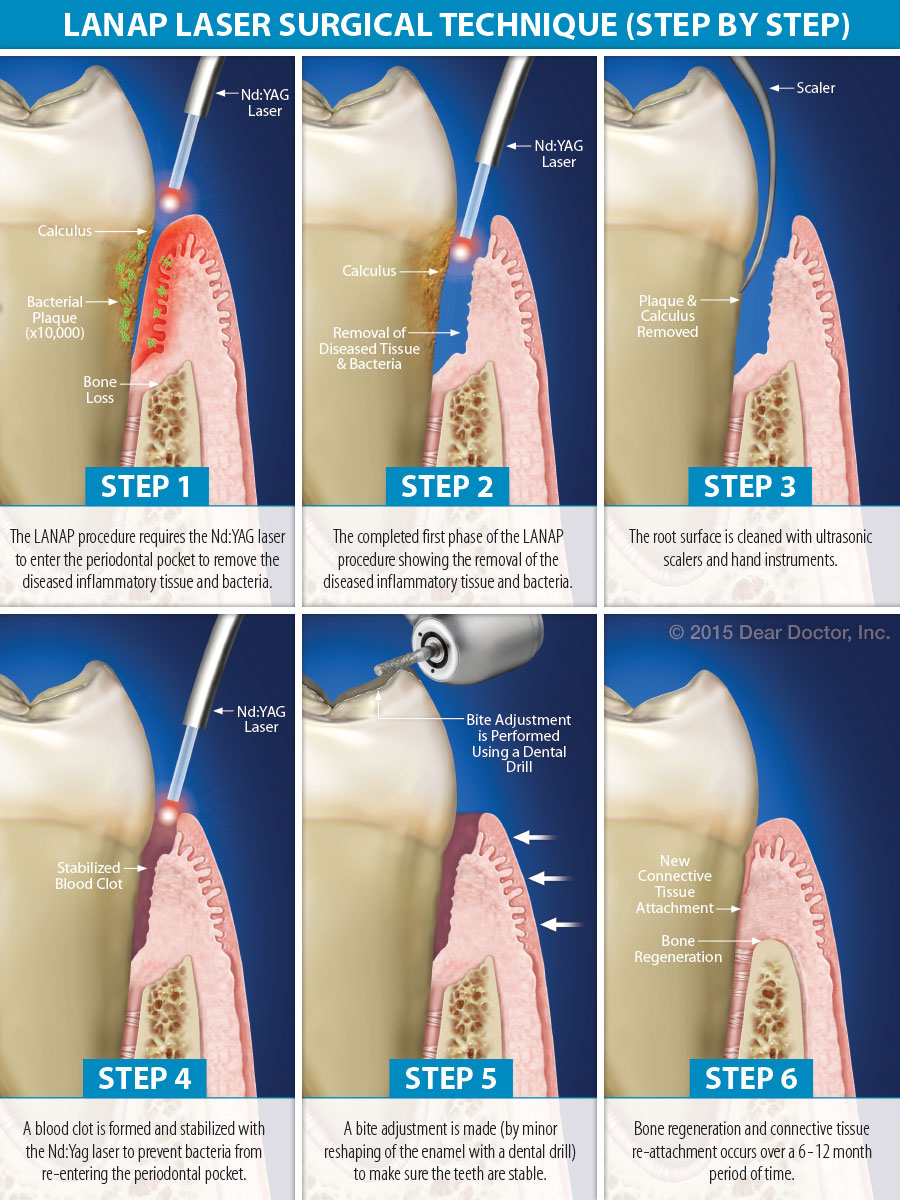Periodontics
What Is A Periodontist?
Periodontists are dentists who specialize in the prevention, diagnosis and treatment of periodontal (gum) disease and in the placement and maintenance of dental implants. They have had extensive training with two additional years of study after dental school. Periodontal diseases are ongoing infections of the gums that gradually destroy the support of your natural teeth. Dental plaque is the primary cause of gum disease in genetically-susceptible individuals. Bacteria found in plaque produce toxins or poisons that irritate the gums. They may cause them to turn red, swell, and bleed easily. If this irritation is prolonged, the gums separate from the teeth causing pockets (spaces) to form. Plaque can also harden into a rough, porous substance known as calculus (or tartar). This can occur both above and below the gum line. As periodontal diseases progress, the supporting gum tissue and bone that holds teeth in place deteriorate. If left untreated, this leads to tooth loss. This disease damages the teeth, gum, and jawbone of more than 80 percent of Americans by age 45.
LANAP (Laser Assisted New Attachment Procedure)

Osseous Surgery
Traditionally, gum disease is treated by eliminating or reducing the pockets that have developed in the diseased gum tissues. The deeper contaminated root surfaces are cleaned, infected gum tissue is removed, and the uneven or irregular architecture of the remaining jaw bone is re-shaped to a more ideal contour. This technique may be utilized for the treatment of gum disease along with new and more sophisticated procedures, which can result in growing new bone in areas that have suffered severe damage from the disease process.
By far the most common surgery used in periodontal therapy is flap surgery. Moderate to advanced periodontal disease involved gum pockets (See What Is Periodontal Disease?) that are too deep to clean without reflecting back the gum tissue for access. Without this access, deep calculus and plaque cannot be removed from the root, and the disease will progress. This surgical cleaning procedure is often called open flap curettage.
Once the pocket is cleaned, the gum may be returned to its original level. This results in a clean root, but the deepened space is still present. Frequent cleanings by the hygienist are necessary to remove the plaque in the residual pocket that the patient cannot reach with flossing and brushing.
Even when there is good oral hygiene and regular quarterly recalls, the bacteria may still continue to cause the pocket to become infected again. When cosmetics are not a concern (on the lower teeth, the inside of the upper teeth, and the outside of the upper back teeth), the surgeon may elect to suture the gum down to where the bone has resorbed, reducing the depth of the space. If the space is reduced to 3 millimeters or less, the patient is able to reach the bottom of the space with daily brushing and flossing, eliminating the disease.
